OKC is a cyst covered with thin keratinized epithelia and is the most aggressive and recurrent odontogenic cyst
2. When not treated properly, it can develop into intractable disease. Moreover, it has a high probability of malignant transformation. Many maxillar and mandibular cancers are known to develop from a keratinized cyst
3. Loos
4 first described a malignant change in the odontogenic tumor in 1913, after which Schwimmer et al.
5, Keszler and Piloni
6, and Tan et al.
7 reported odontogenic-cyst-induced malignant tumor cases. The mechanism of the malignant variation of the odontogenic cyst epithelia has not been clearly understood. In a study by Gardner
8, 25 cases of malignant odontogenic cyst were analyzed using literature published between 1889 and 1967. When the odontogenic cyst is positioned in the maxilla or the mandible for a long time, the stratified squamous epithelia can become malignant due to chronic inflammation. There is a report that suggested that chronic inflammation of cyst epithelium could be the main predisposing factor for malignant transformation
9. In the 1971 World Health Organization (WHO) classification
10, there are three types of dental cancer: (1) malignant ameloblastoma, (2) primary intraosseous carcinoma, and (3) other carcinomas arising from the odontogenic epithelium, including those arising from odontogenic cysts. In the 1982 study of Elzay
11, primary intraosseous carcinomas included (1) carcinomas arising from odontogenic cysts, (2) carcinomas arising from ameloblastomas, and (3) carcinomas arising from odontogenic epithelial rests of Malassez. As a result, the definitions of intraosseous carcinoma and dental cancer have been mixed. In this study, the case was diagnosed based on the WHO's odontogenic-cyst-induced squamous stratified cell carcinoma, which is different from Elzay's primary intraosseous carcinoma. The pathology report in the present case revealed an SCC lesion that arose from an initial OKC lesion. According to a study by Gardner
8, odontogenic-cystinduced cancer frequently developed in the mandible (15 cases) and the maxilla (nine cases). The present case developed in the right mandible. The clinical manifestations vary according to the location, size, and grade of the cyst, but they are often subclinical in the earlier stages and found accidentally on an X-ray. With their progression, symptoms such as facial bone and facial swelling, tooth pain and mobility, mastication and mouth opening disorders, and ulcers may develop
12. Marsupialization is contraindicated in the treatment of suspected odontogenic-cyst-induced cancer due to the possibility of epithelial transformation to malignancy
8. Instead, removal of the nearby lymph nodes and surgical excision are recommended
3,
13 by Elzay
11, as at least 66% of patients experience recurrence at least once. In a study by Bereket et al.
14, the two-year survival rate is between 53% and 63%. According to a study by Gardner
8, five of 25 patients died within 10 to 24 months after the initial diagnosis was made, but metastasis was not observed in the malignant OKC cases
15. In the present case, a completely free surgical safety margin was obtained from the final specimen, and as a result of the cervical neck dissection, no metastasized cervical lymph nodes were observed. Considering the subject's age, postoperative radiotherapy was not performed. In the follow-up PET CT images at one year postoperatively, there were no metastatic findings in the lesion, cervical lymph nodes, or other organs. After the mandibulectomy, a fibular free flap and a reconstruction plate were used for immediate reconstruction for jaw function and cosmesis. The advantages of the pre-bended titanium reconstruction plate include: easy application, stability, minimal damage in the blood supply to the underlying bone, low cost, a short operative time, and postoperative aesthetic satisfaction. However, complications such as instability and delayed union, non-union, and infection due to screw loosening may develop
16.
Notable in this study was the simulated operation using a skull RP model and referable fibular bone resin block for aesthetic jaw form after the wide excision and reconstruction. The free flap was designed on the subject's right ramus, and the measurements were applied to the prepared fibular bone resin block. The prepared skull RP model was used with fibular resin block for surgery simulation to save time and to reduce errors during the actual surgery. Although a preoperative guide stent and simulation surgery using computer aided design/computer aided manufacturing were not used in this study, the skull RP model, pre-bent reconstruction plate, and guided fibular resin model were used effectively for instant reconstruction during the conventional surgery. As a result, accurate postoperative facial symmetry was achieved. One and half years postoperatively, the subject shows a symmetrical profile with a high degree of self-satisfaction regarding jaw function and aesthetics without cancer recurrence. A 5-year follow-up is needed to confirm complete healing. Further studies, including a literature review on odontogeniccyst-induced cancer, may be needed in the future.
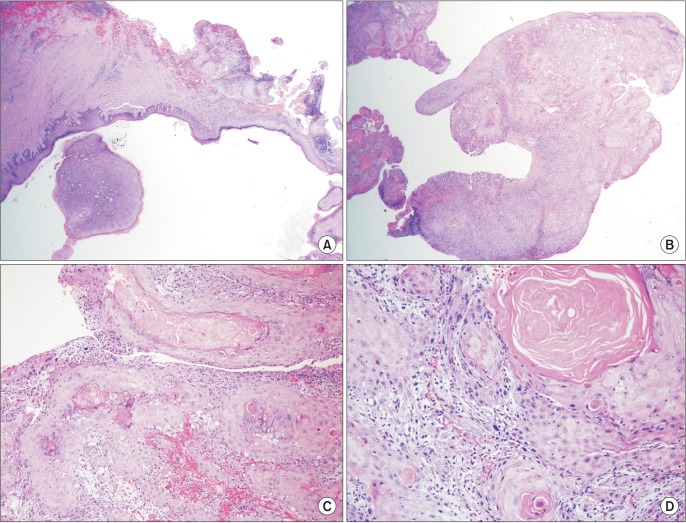




 PDF
PDF ePub
ePub Citation
Citation Print
Print



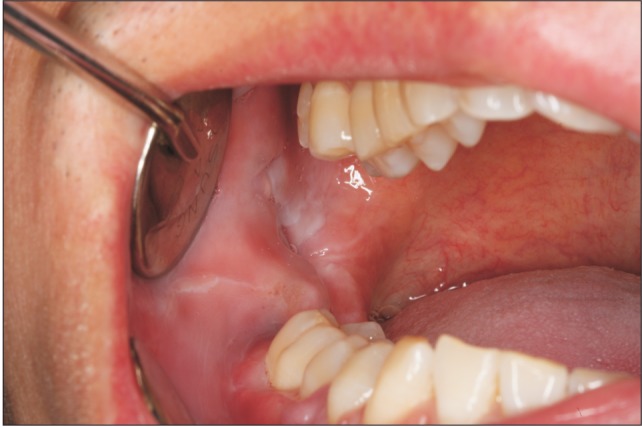
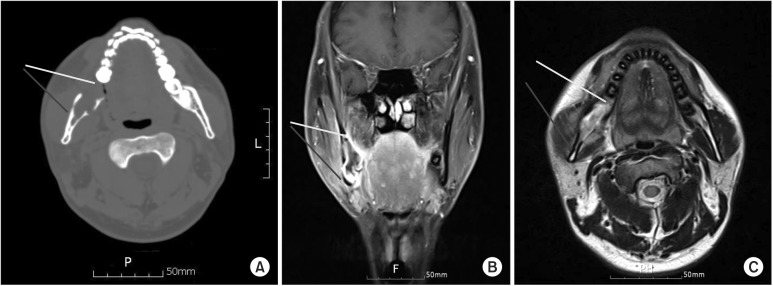
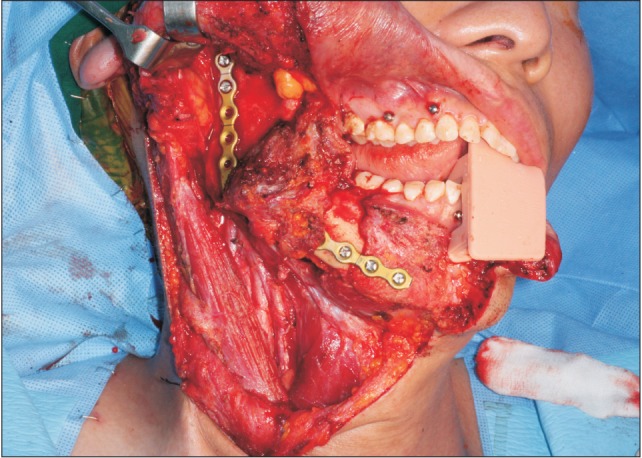
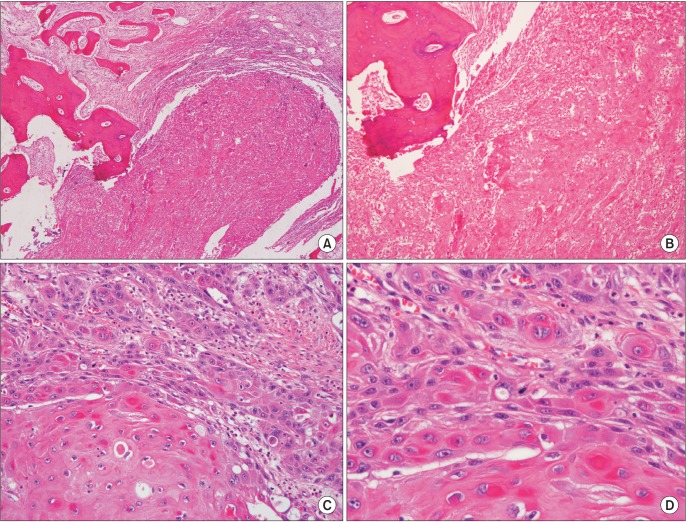

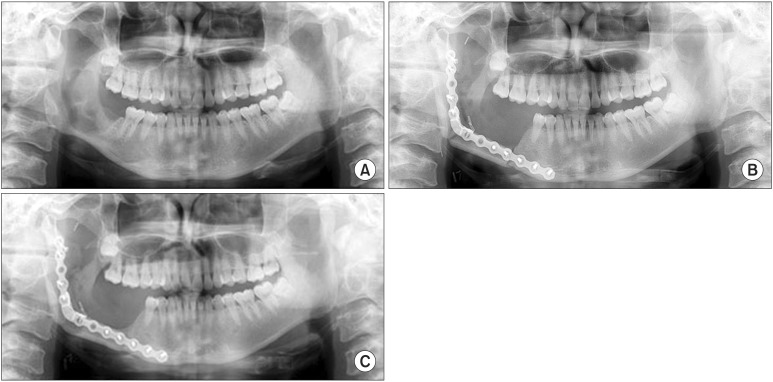

 XML Download
XML Download